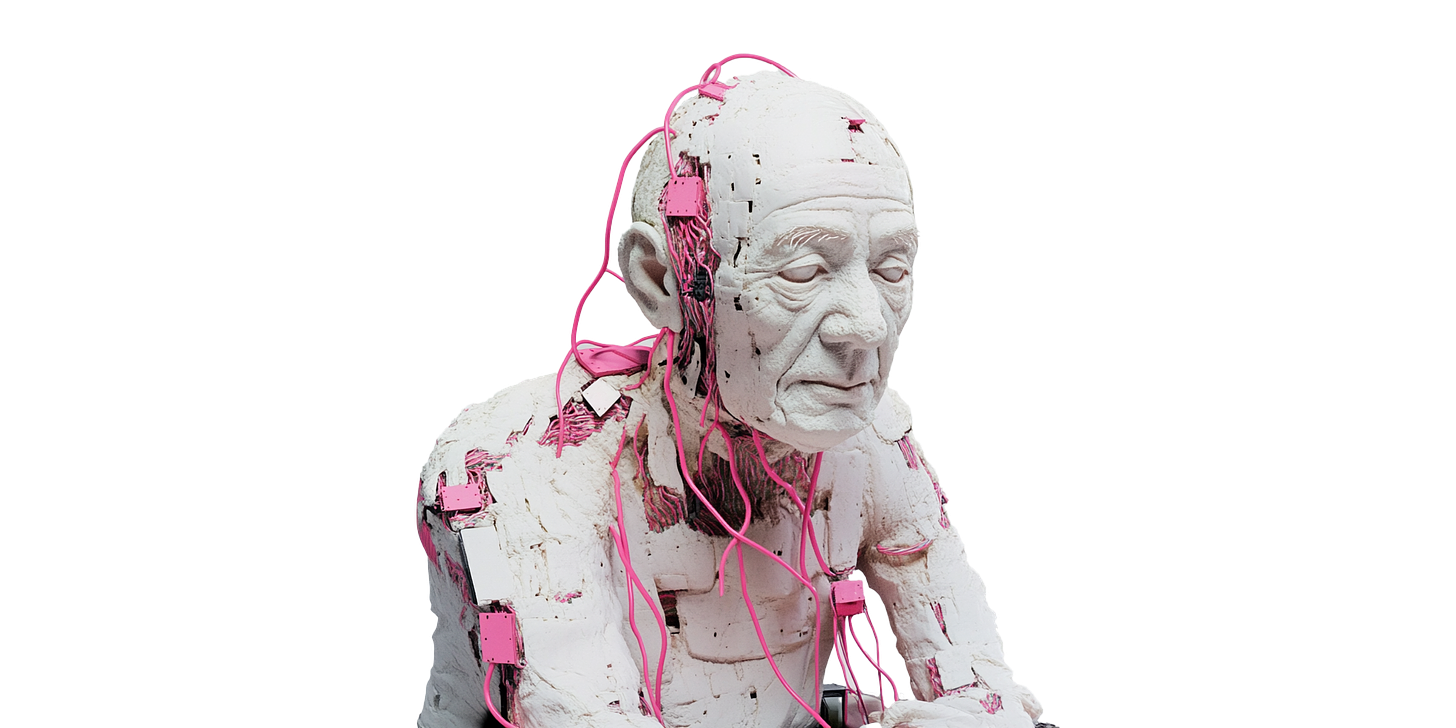There is a lot of excitement around “AI agents” these days. Maybe I’m biased by algorithms that curate my social media feeds, but it seems that everywhere I look, there is someone experimenting with AI agents in their work.
While it’s really interesting and informative to see these experiments, it’s just as important to acknowledge that not all of this is completely new. Software agents have been around for a bit longer than many of us think.

Last year, I wrote about the OG software developer, Ada Lovelace, in “Poetical science”. She wrote the first computer algorithm and predicted the emergence of generative AI (yes, she did!), and she did it almost two centuries ago.
In this post, I would like to jump into the XX century and share a story about a Hungarian-born draftsman, programmer, and, finally, investor, Thomas Peterffy. Peterffy migrated to America in 1965. With $100 in his pocket, he started a new life there. According to Forbes, his wealth is now shy of $40 billion1. And all of it thanks to his work on algorithmic agents.
The following is a short abstract from my book, “The Economy of Algorithms: AI and the Rise of the Digital Minions” (audiobook here), which introduces Peterffy and the first algorithmic agent he built that could type on a regular keyboard. When you read it, ask yourself: what would Peterffy come up with in 2024?
Algorithms that are capable of buying and selling began operating in financial markets in the 1980s. Today, algorithmic trading has become a fact of life. While estimates vary wildly, every one I have seen claims that algorithms now perform more than 50 percent of financial-market transactions. The barrier to determining an exact percentage is that traders do not have to disclose how a transaction was created, so we don’t know whether it was the result of an algorithmic process or a human decision. And, in fact, there is no clear-cut division between the two. Case in point: how can we tell whether a person selling shares has decided to do so by themselves or is blindly following algorithmic advice? And what if an algorithm is pretending to be human? Perhaps this is the real-life version of Turing’s imitation game?
Thomas Peterffy, a Hungarian-born investor, was possibly the first person to create a trading algorithm and let it operate in a financial market. The algorithm was so fast it could do the work of many human traders simultaneously.
In 1987, Peterffy demonstrated his work to a Nasdaq Stock Market official, who had wanted to pay a casual visit to one of Nasdaq’s fastest-growing customers. On arriving at Peterffy’s office, the official was expecting to enter a busy space, with traders typing away on Nasdaq terminals. Instead, the office was mostly quiet, with just one Nasdaq terminal hooked up to a computer, which was running the trading algorithms.
Peterffy had found a way to hack into the Nasdaq terminal through which orders had to be entered, which allowed him to write an algorithm that would read market data and send the orders directly to the market. The hack was quite literal – it involved tapping into the wires running into the Nasdaq computer to capture the data flowing into the terminal, and then sending electronic orders back the same way.
The official was not pleased with what he saw and requested that Peterffy ensure that future transactions would be typed, character by character, using a keyboard – just the way a human entered them. Otherwise, his access to Nasdaq would be withdrawn.
In what now sounds like a hilarious act of defiance, Peterffy built a robot that could type. He even made sure the robot had rubber fingertips. Peterffy’s algorithm ran on one machine and then the robot typed the transactions into the official Nasdaq terminal. After the official’s visit, Peterffy was prevented from tapping into the Nasdaq computer wires, so the only way to read the data was to place a camera in front of the terminal and then use character-recognition software.
When the official returned and saw the contraption, he shook his head but couldn’t do much: Peterffy had fulfilled all his conditions. This marked the beginning of the era in which business machines began trying to behave like humans.
Peterffy’s algorithmic trader made him rich. The algorithm was autonomous and capable enough to make faster transactions than any human could. From a business-model perspective, it allowed Peterffy to launch a unique value proposition: because his algorithm traded faster than a human, it was always first to capitalise on an opportunity in the market. This single point of advantage gave rise to algorithmic trading, where if a transaction is a nanosecond faster or slower it could spell the difference between being successful and being outraced by a trader with a faster algorithm – or one that happens to have their computers physically closer to the stock exchange.
Not that personal wealth is the measure of success. But it can be a good proxy for some people.





Marek, it's a great reminder that algorithms have been around a long time, but could I quibble over whether this example was an "agent" or not? Certainly at one level: it was "doing things on a human's behalf".
But it was still a simple one-step process (I think): look at data, execute a transaction. There are thousands of algorithms that do that every day in business processes (airline pricing, production line optimization, spotify playlists...).
In order to differentiate from those uses, doesn't the notion of "agents" have to involve the management of some sequential steps and choices and/or decisions over what other algorithms to use?